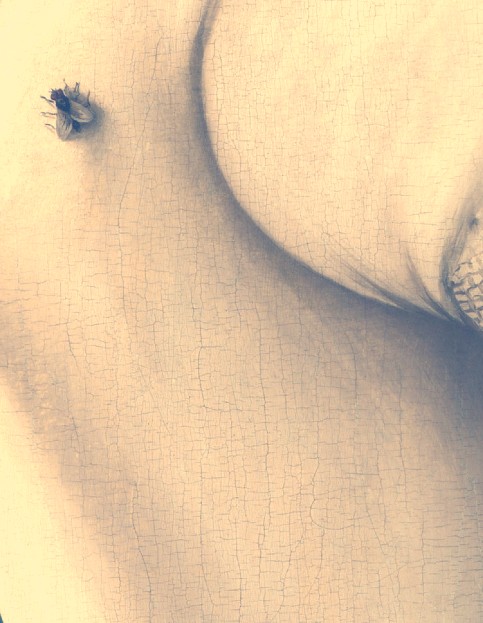“That’s the big question, the one the world throws at you every morning. ‘Here you are, alive. Would you like to make a comment?’”
– Mary Oliver, Long Life: Essays and Other Writings
On a wall in London’s National Gallery, there is a small portrait of an unknown woman painted by an unknown artist. Sometime around 1470, somewhere in southwest Germany. The title of the painting is: Portrait of a Woman of the Hofer Family.
She is, forgettable; neither beautiful nor ugly, neither old nor young. And Hofer was a common family name; she could have been anyone, any woman in 1470—of a certain socioeconomic standing; to commission a portrait, then, was a long and costly, once-in-a-lifetime undertaking, if undertaken at all. A single snapshot; one shot at capturing who a person was—a lifetime of loves and thoughts and acts and selves condensed—and that they were:
Once, in 1470, somewhere in Germany, this woman existed. She wore a black dress with a white headdress and held flowers and was alive and real.
Forget-me-nots, the flowers. And her velvet dress was trimmed with fur, and the large, magnificent brocade on her head was starched and ironed into stiff, angular folds so exquisitely painted as to reveal every flickering shade and shadow of white, and the texture of the fabric and detail of the stitching, so real one could almost reach a hand out to touch it and—
A fly! There, on the painting! Quick, swipe it off!
A small, magnificent fly painted on the starched and ironed fabric, so exquisitely as to make one question the translucence of its wings, their shadows, the fineness of its limbs, and truth, and reality, and all this seriousness about our lives and living.
A fly is a memento mori; a reminder that it, and we, are mortal and impermanent, unremarkably. So are forget-me-nots, the flowers of remembrance; by the time the portrait was complete, they and the fly were long dead. And the woman too, maybe. But,
see how magically alive they are, how vividly beautiful and real, in this moment, in a painting on a wall, by an unknown artist, of an unknown lady,
who had one shot at a portrait, centuries before cameras, before moments could be captured by the million. She chose her best dress and best brocade for the occasion, and finest gold rings and necklace. The artist chose their best paints and brushes, and exercised their finest skills at capturing lights and whites and the trim of fabric and flush of skin. They had one moment, the two of them, and it was such a serious thing, for it would be gone in a moment, and they knew it, and all that would remain was the painting. Which would outlive them, for posterity and for centuries. But in that moment, it was theirs, and they were alive, and—
Look! A fly!
Such seriousness, they were saying. About life and living.
“I love you.
It will end.
Leave something of sweetness and substance in the mouth of the world.“
– Anna Belle Kaufman, Cold Solace
